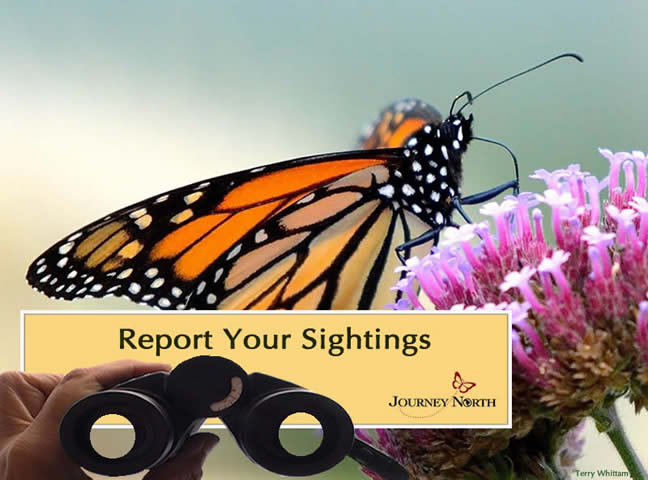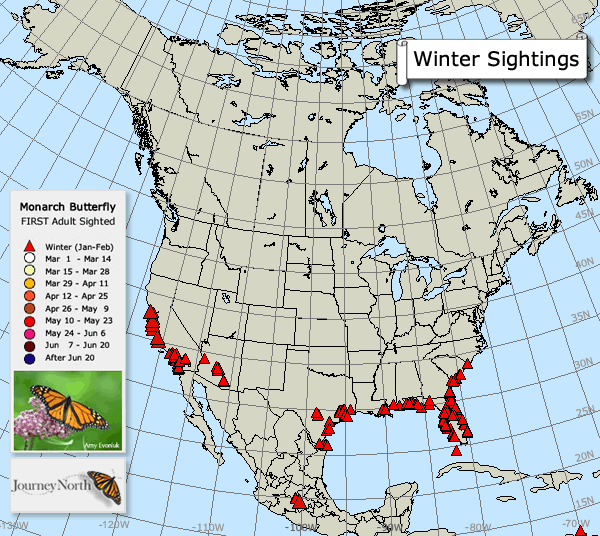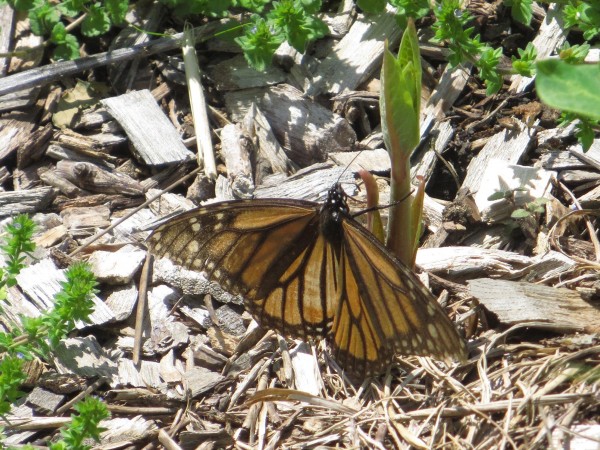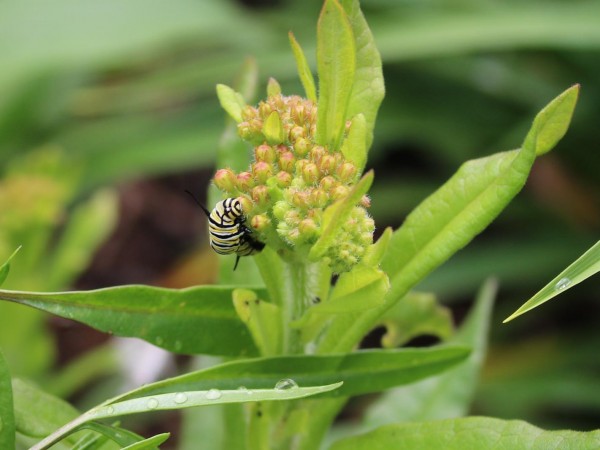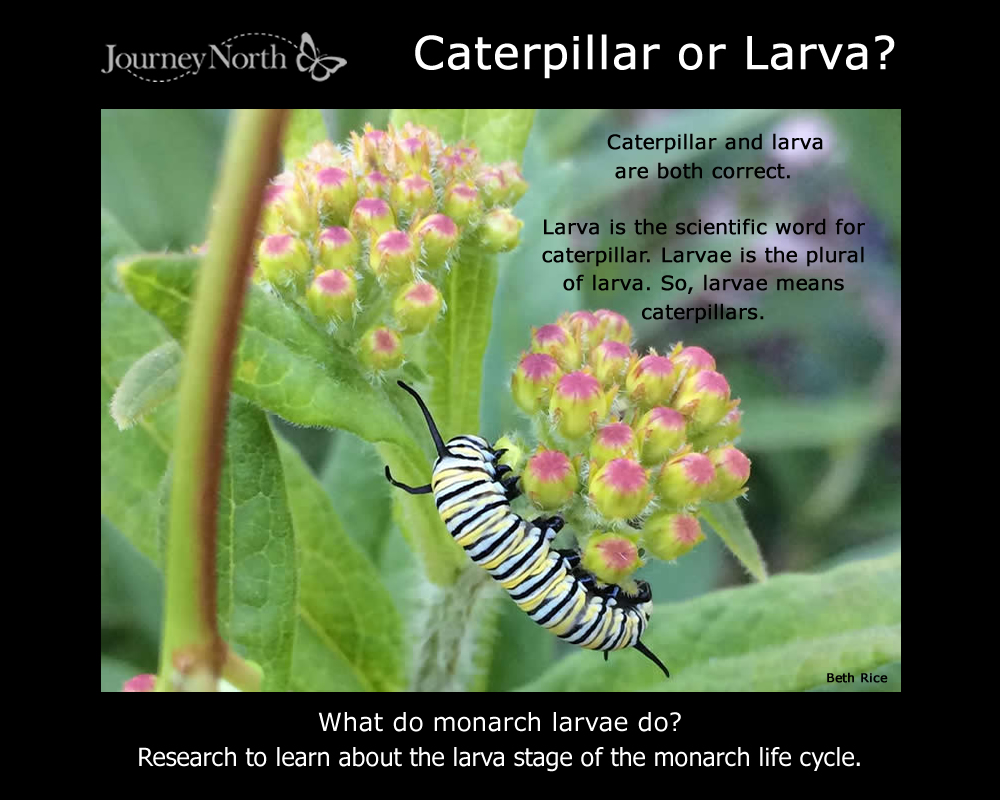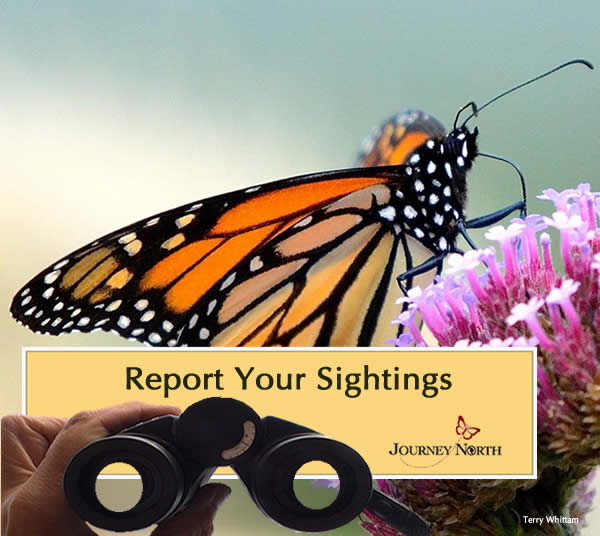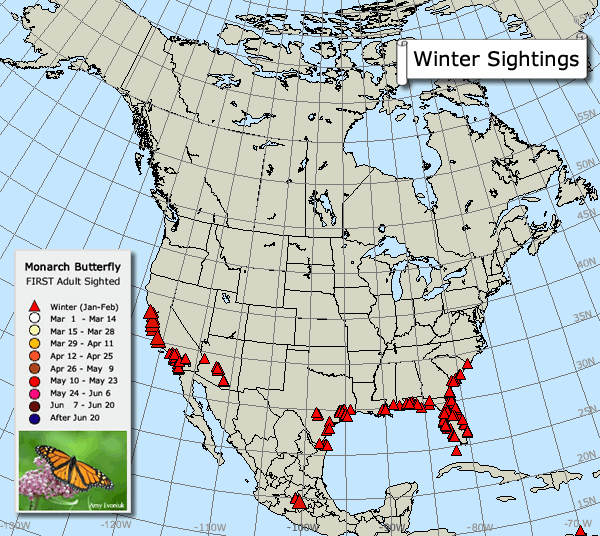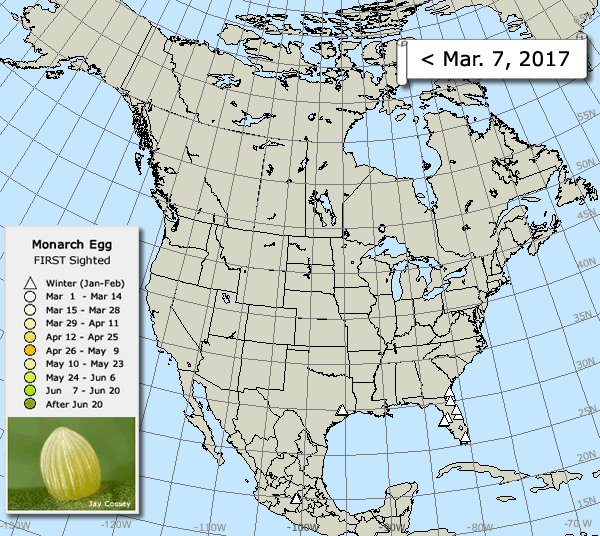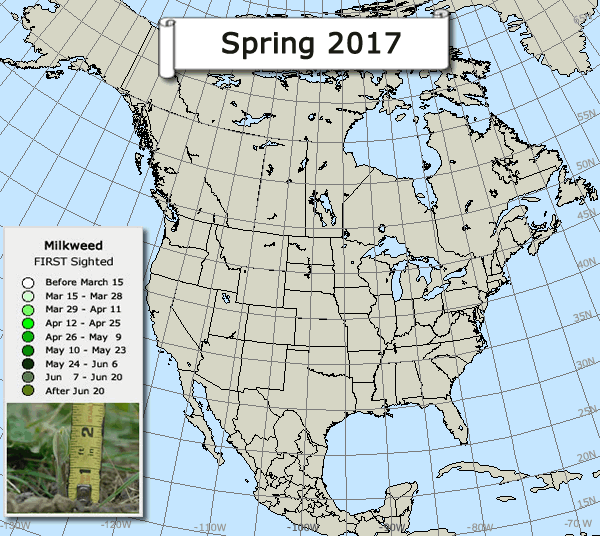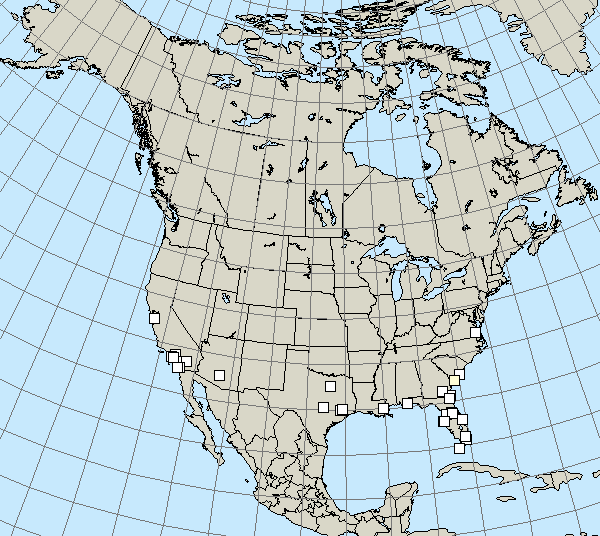Waiting for Adults
Never Fewer Butterflies
Right now, the number of adult butterflies is at its lowest; at no other time of year are there so few adult monarchs.
With so few butterflies, the migration has come to a standstill. Look at the animated migration map and see how little things have changed. We're still waiting for the surge of 1st generation butterflies and this week was the slowest of the season. There were still people reporting faded-winged butterflies, which means that some of the monarchs from Mexico are still around.
New Generation Coming
People are reporting larvae — lots and lots of larvae. Eating and growing, today's monarch caterpillars will soon be northbound butterflies.
No to Neonicotenoids
Journey North participant Karen VanHees wrote with concern about plants being sold to butterfly gardeners that contain neonicotenoids, a class of systemic pesticides that are harmful to monarchs and other pollinators. The flowers are toxic, and so is the plant material that's eaten by monarch larvae and other herbivores. Watch out for neonicotenoids — and other pesticides — in any garden products that you purchase. If you're not sure, don't buy it. Read more:
Xerces Society: Neonicotinoids in Your Garden
Monarch Joint Venture: Insecticides and Monarchs
Xerces Society: Neonicotinoids and Bees


